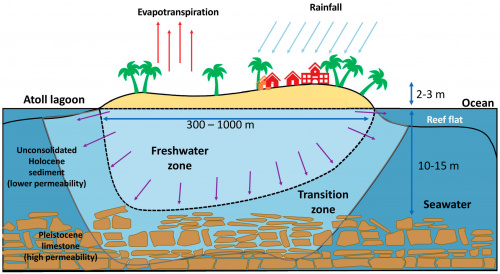Crowdsourcing groundwater quality in small islands
The Maldives has more than 180 inhabited islands with many with populations less than 1000 inhabitants. Less populations do not mean they are facing lesser challenges to the sustainability or lower rate of change. In fact, these are among the most climate-vulnerable places on the earth and undergoing rapid change that need to be continuously monitored. But the challenge is every rufiyaa allocated for monitoring the vulnerability is money taken away from addressing the same vulnerability – a zero sum game. Therefore, in the Maldives, as well as other small islands, we need to continuously innovate on cost-effective, but also EFFECTIVE, ways of doing environmental monitoring.
But can we enlist the help of the inhabitants of these islands to do the monitoring of the groundwater resources. This is exactly what we did with 45 inhabited islands. A simple idea: Every household that has a groundwater well (nearly 100% in many islands) is a potential sensor of the health of the freshwater lens. We just have to enlist their support and suddenly we have thousand sensors to monitor our resources! This is exactly what we did. We surveyed more than 2100 households from the 45 islands and inquired them how the perceive the groundwater they obtain from the family wells. Does it smell? Looks clear? Do they use it for drinking and cooking? Washing, bathing and toilet flushing? We went on. The result was a dataset that revealed plenty of useful information.
